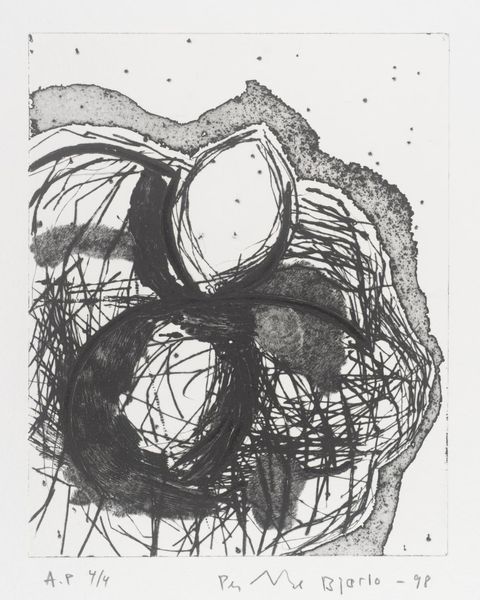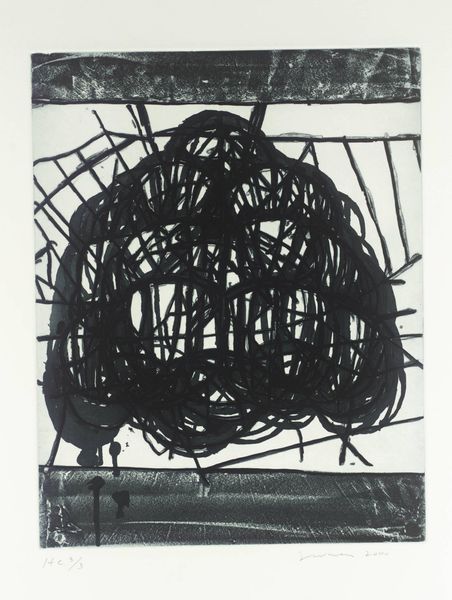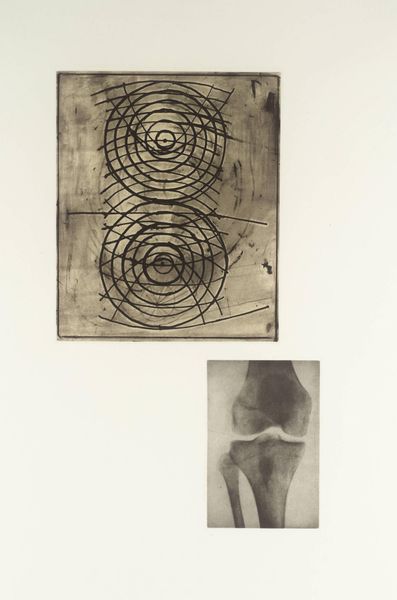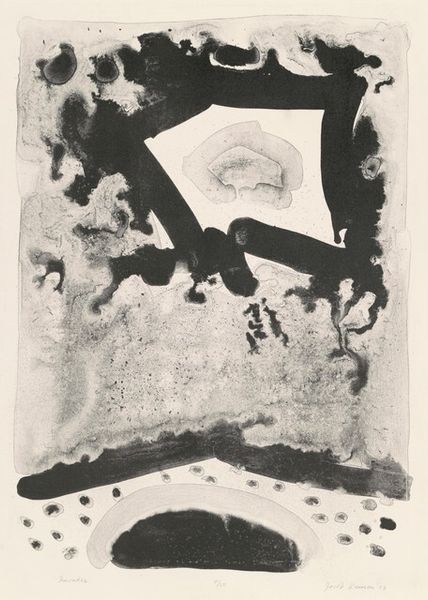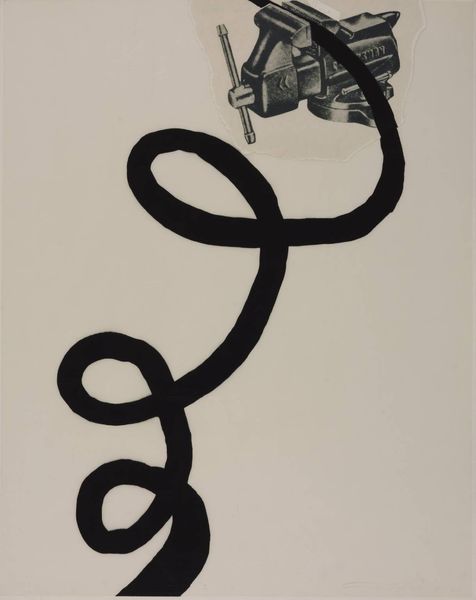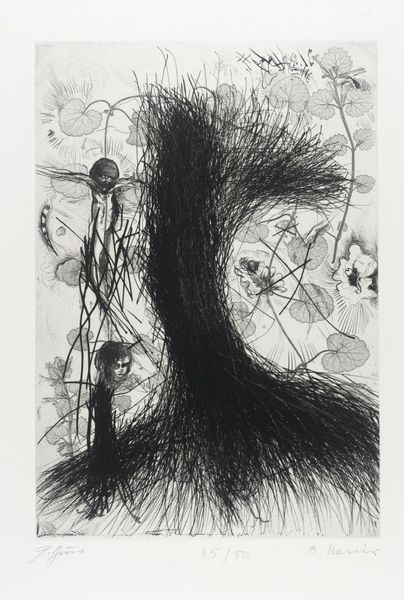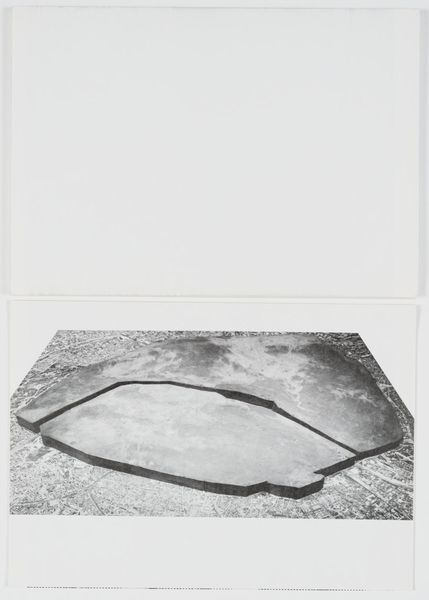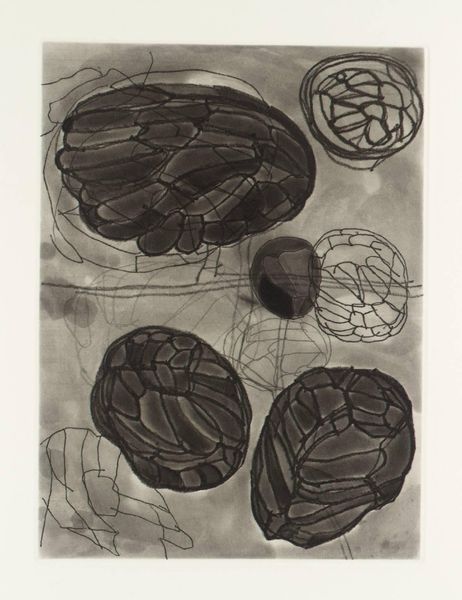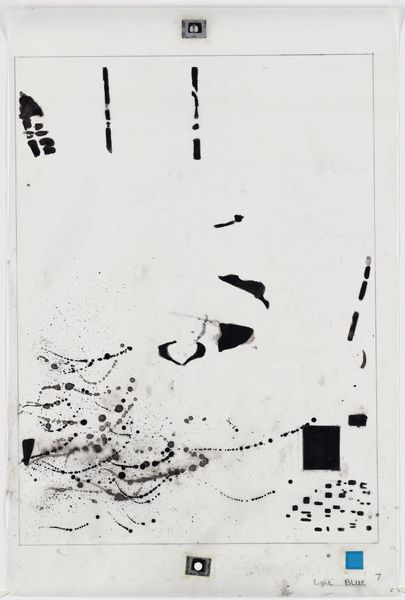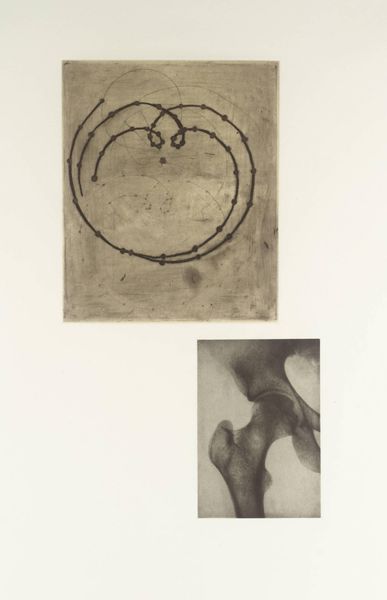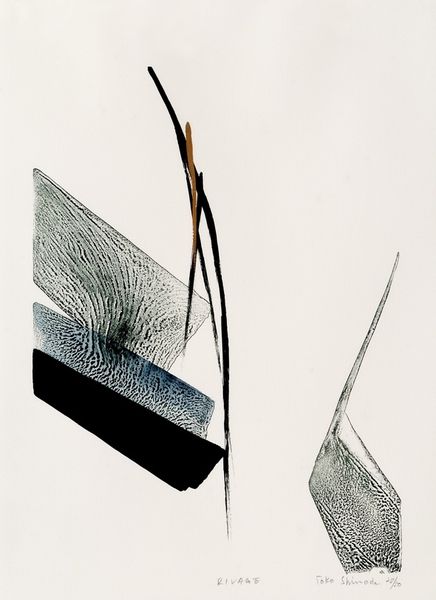
drawing, paper, ink
#
stencil art
#
drawing
#
negative space
#
paper
#
form
#
ink
#
geometric
#
abstraction
#
line
#
modernism
Dimensions: sheet: 56.2 × 37.94 cm (22 1/8 × 14 15/16 in.)
Copyright: National Gallery of Art: CC0 1.0
Curator: Al Taylor's "Hanging Puddles," a 1992 ink on paper drawing, strikes me as almost buoyant despite its monochrome palette. The black geometric forms hovering above those seemingly reflected below—it feels a bit like a Rorschach test, doesn’t it? Editor: Right away, I’m drawn to the work’s seeming simplicity, and how deceptive that initial impression is. The materials are basic: ink, paper. But look closer, and you notice the meticulous network of fine lines, the layering, and how these combine to create this illusion of depth and movement. The work sits firmly within the realm of post-minimalism. Curator: Exactly! I think Taylor is really toying with our expectations. The "puddles," if that's what they are, feel strangely airborne. What could speak to a reflection in that kind of atmosphere? What even is it that is causing the reflection? Is this just pure, formal investigation? Editor: Consider Taylor’s larger body of work, which often combines fine art techniques with those from craft or design. It's never "just" formal. There is an intentional blurring of categories and a keen interest in how art objects exist within and comment on their everyday environments. This "puddle" exists in the realm of commerce as a readily sold work of art, of design. It's also a piece that is created from the readily purchasable ink. How might the conditions of art production itself be hanging above our heads in this piece? Curator: I'm starting to think about it differently now. What about the visible numbering of the circular shapes up above? Editor: Exactly, it's also reminiscent of industrial prototypes. Numbers indicate seriality, replication... suggesting the artistic process as a form of labor not divorced from but deeply engaged with the broader socio-economic processes of its time. The repetitive and standardized nature of making things... all part of a factory-driven mentality. Curator: The "puddles" below aren't quite reflections—more like exaggerated echoes or cartoonish doppelgangers. It’s less about visual accuracy, maybe, and more about the sheer joy of experimentation. Taylor had the good kind of fun! Editor: He uses the mundane to invite contemplation, doesn’t he? To examine the way the mundane mediates reality itself. Seeing something like "Hanging Puddles" reminds us that meaning resides as much in the how as in the what. Curator: True enough. Well, this makes me appreciate the fluidity of "Hanging Puddles" even more. Thanks for making me dive into those... processes, let's call them. Editor: And you've brought it all down to earth, made the puddles more human. It's always more about conversation and what is actually there, or what we perceive is there.
Comments
No comments
Be the first to comment and join the conversation on the ultimate creative platform.
